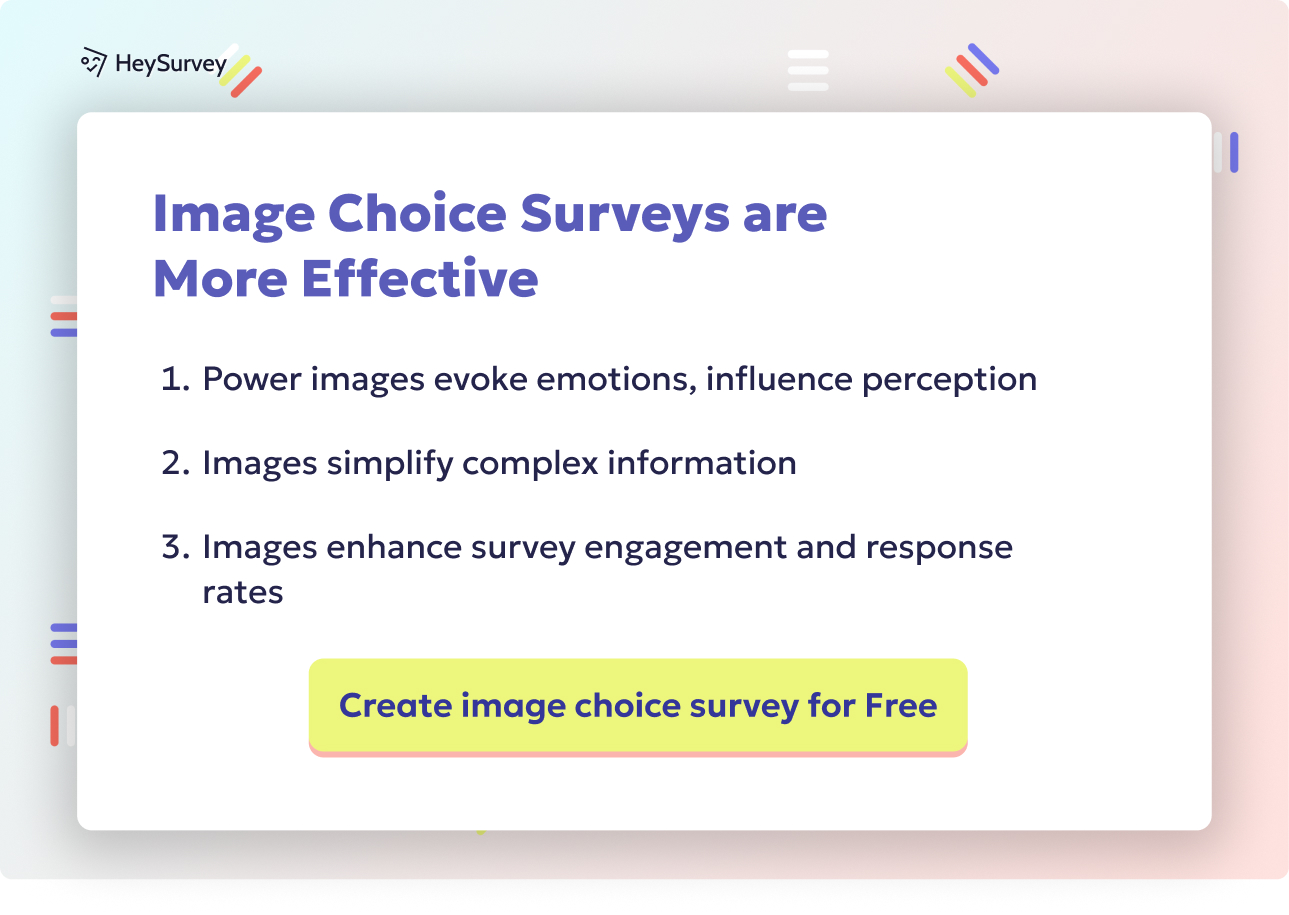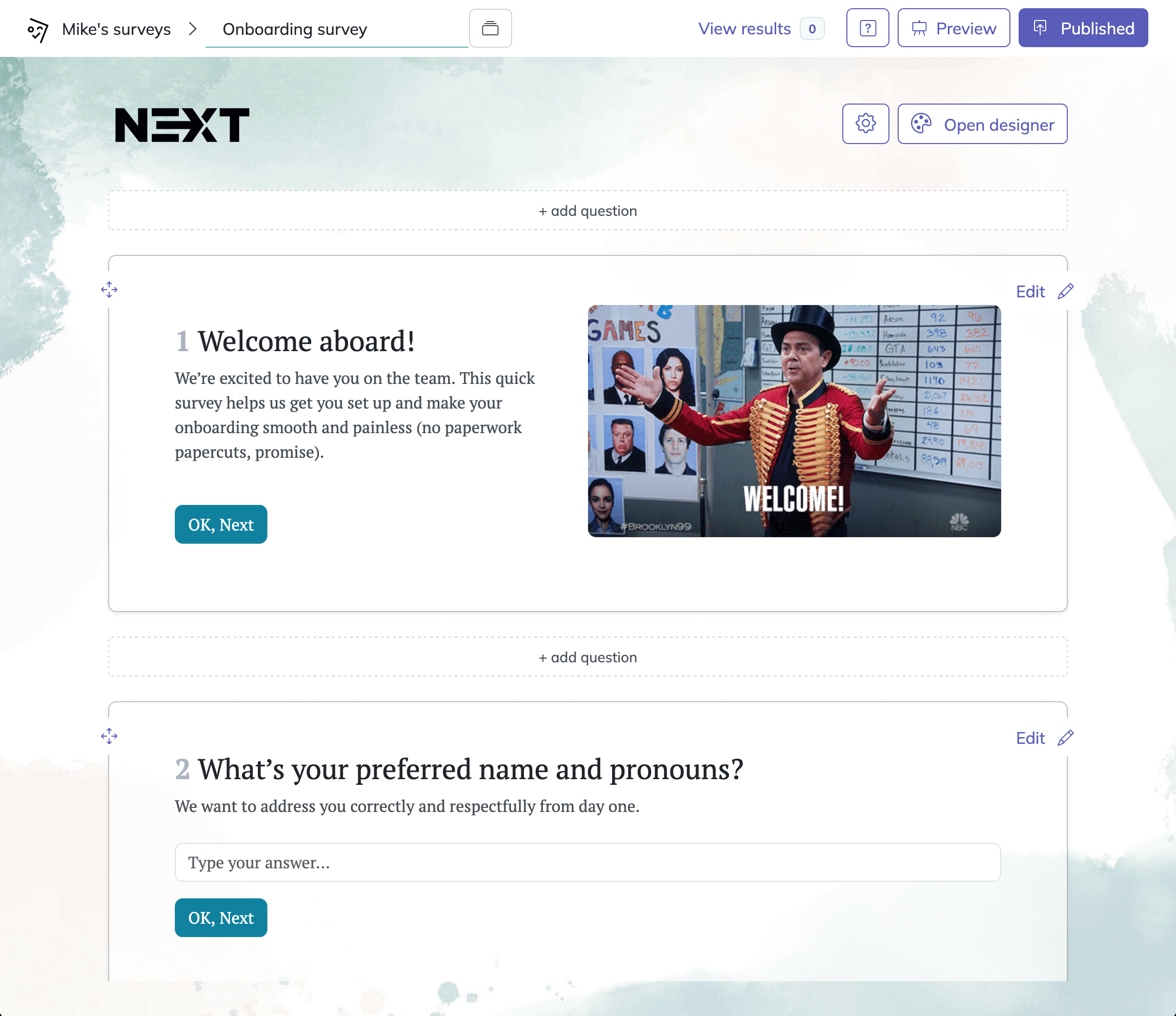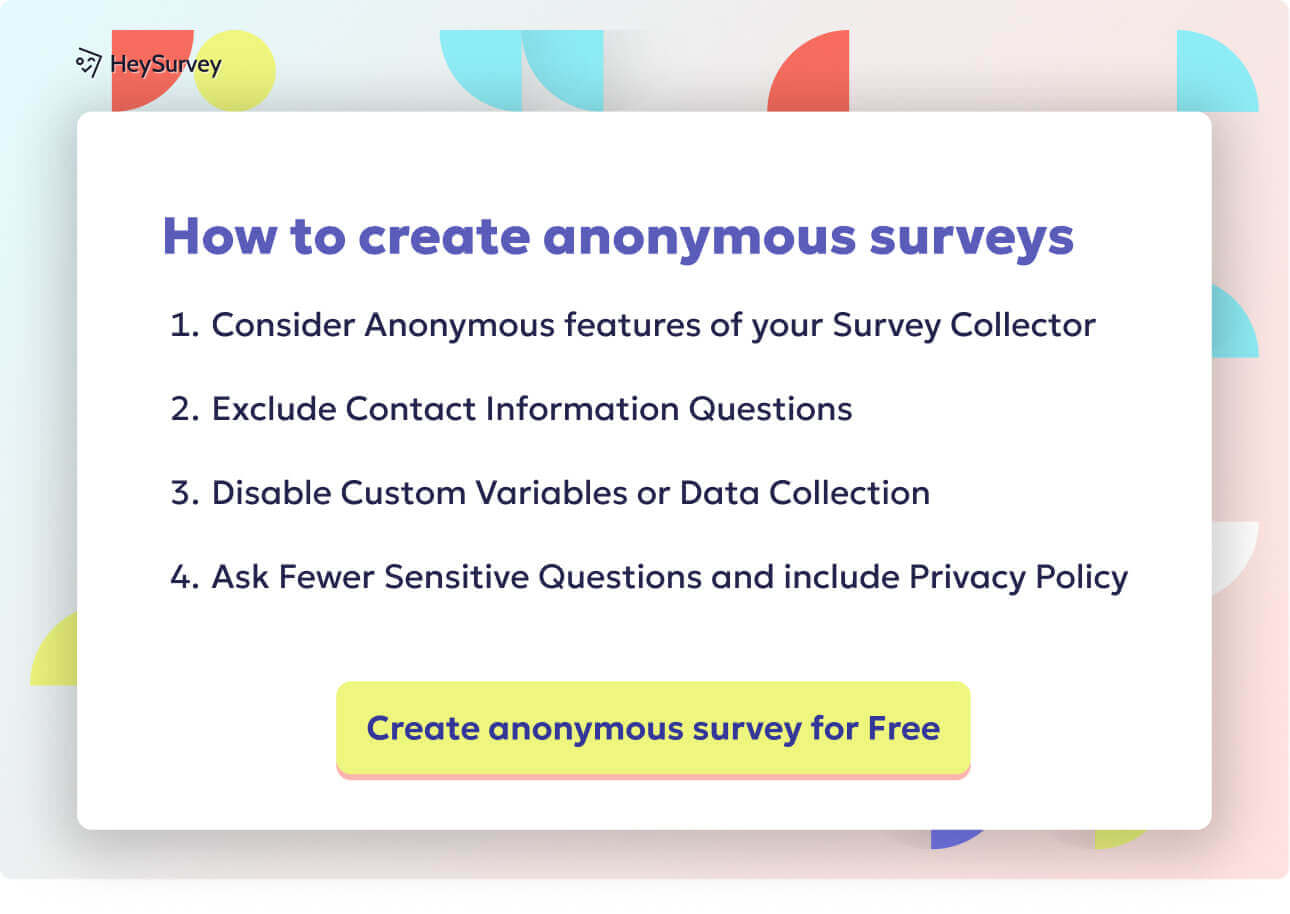32 Healthcare Survey Questions to Improve Patient Care & Staff Safety
Explore 35+ healthcare survey questions across 7 types to enhance patient care, staff safety, and accessibility with expert best practices.
Healthcare surveys are the unsung heroes behind the scenes, quietly helping hospitals, clinics, and care teams get better—one question at a time. With so much riding on quality outcomes and patient voices, using the right survey at the right moment can spark real change for both staff and patients. Whether your goal is to boost value-based care, tick regulatory boxes, or simply make people feel heard, there’s a survey for every scenario. In this guide, you’ll discover seven crucial survey types in healthcare—each loaded with practical sample questions—to help you unlock insights and drive smarter decisions.
Patient Satisfaction Surveys
What Patient Satisfaction Surveys Measure
Patient satisfaction surveys are a staple in healthcare, designed to measure the overall patient experience from the waiting room to discharge. These surveys gauge everything from communication skills and bedside manner to facility cleanliness and follow-up care. Commonly delivered through email, SMS, or even at-the-door kiosks, they're quick and easy for patients to complete, maximizing response rates.
The heart of the matter is simple: uncovering how your patients truly feel about the care they received. These insights provide a pulse on performance that can shape everything from staff training to facility upgrades.
Why & When to Use Patient Satisfaction Surveys
Patient satisfaction surveys shine when you want to:
Gauge the patient experience and discover hidden service gaps
Benchmark the organization against industry leaders as required for regulatory compliance (think CMS and CAHPS)
Unlock powerful incentives and reimbursement tied to positive patient feedback
Spot trends by deploying surveys right after discharge, outpatient visits, or in a regular rhythm for chronic care patients
By collecting feedback at key moments, you empower your team to make course corrections before small issues turn into major patient complaints.
5 Sample Patient Satisfaction Survey Questions
How would you rate the clarity of information provided about your condition or treatment?
Did you feel that staff respected your cultural or personal needs?
How satisfied were you with the wait time before seeing a healthcare professional?
On a scale of 1–10, how likely are you to recommend our facility to others?
Were post-treatment instructions easy to understand and follow?
Positively framed patient satisfaction survey questions yield higher satisfaction rates than negatively framed ones, indicating that question wording significantly influences patient responses. (ncbi.nlm.nih.gov)

Creating your healthcare survey with HeySurvey is a breeze—even if you’ve never built one before. Follow these three easy steps to get started, plus a few bonus tips to make your survey look great and work smarter.
Step 1: Create a New Survey
- Head over to HeySurvey and select “Create new survey.”
- You can either start from a blank canvas or pick a pre-built template tailored for your healthcare survey type.
- Name your survey clearly—something like “Patient Satisfaction Survey” or “Post-Discharge Feedback”—to keep things organized.
Pro tip: If you’re reading this on HeySurvey’s website, look for the button below to open a ready-made template and jump right in!
Step 2: Add Questions
- Click the “Add Question” button to start building your questionnaire.
- Choose the question type you want—single choice, multiple choice, scale, or text for detailed answers.
- Enter your carefully crafted survey questions (like those examples in this article) and customize answer options.
- Mark questions as required if they’re essential to your survey’s goals.
- Use the branching feature to guide respondents to relevant follow-up questions based on their answers.
Fun fact: You can add images or little videos to your questions for extra engagement, plus format text with bold or lists for clarity.
Step 3: Publish Survey
- Once you’re happy with your questions, hit the Preview button to see exactly how respondents will experience your survey.
- Make any last tweaks to the design or wording.
- When ready, click Publish to generate a sharable link.
- Share that link via email, SMS, your website, or even embed it directly into patient portals.
Note: You will need to create a free HeySurvey account to publish and collect responses.
Bonus Steps to Level Up Your Survey
Apply Branding:
Upload your healthcare organization’s logo and customize colors and fonts through the Designer Sidebar. This keeps your survey professional and on-brand.Define Survey Settings:
Set start and end dates, response limits, or add a redirect URL for a custom “Thank You” page after submission.Skip Into Branches:
Use branching logic to skip irrelevant questions and create a more personalized and efficient survey experience for your respondents.
With HeySurvey, you’re just a few clicks away from gathering insightful feedback that can truly enhance your healthcare services. Ready to start? Open that template and take the first step!
Post-Discharge Follow-Up Surveys
What Post-Discharge Follow-Up Surveys Measure
Post-discharge follow-up surveys zero in on the critical days and weeks after a patient leaves your care. The focus? Transitional care—making sure patients can manage recovery and spot budding complications at home. These surveys can be delivered via SMS, email, or even automated phone calls, making it easy for patients to respond.
The real power here is early flagging of concerns that could spiral into costly readmissions or poor health outcomes. This proactive approach protects both the patient and your reputation.
Why & When to Use Post-Discharge Surveys
Deploy these surveys to:
Prevent unnecessary readmissions by ensuring patients understand and follow their care plans
Monitor recovery and offer personalized interventions if patients struggle
Meet Joint Commission standards and assist with regulatory reporting
Capture patient feedback 24–72 hours post-discharge and again at the 30-day check-in
This double-tap approach offers the chance to identify and resolve concerns before they escalate, keeping patients safely on track.
5 Sample Post-Discharge Survey Questions
Have you filled and begun taking your prescribed medications?
Do you understand the warning signs that require immediate medical attention?
How confident do you feel about managing your care plan at home?
Have you scheduled or attended your follow-up appointment?
Were there any barriers (transportation, cost, language) that made post-care instructions difficult to follow?
Implementing post-discharge follow-up surveys significantly reduces hospital readmission rates by identifying and addressing patient concerns early. Source
Telehealth Experience Surveys
What Telehealth Experience Surveys Measure
Telehealth experience surveys are all about virtual care, from live video consults to ongoing remote monitoring. With technology becoming a healthcare mainstay, these surveys help you ensure your digital bedside manner is up to par. Delivered right after virtual visits or as a recurring check-in for remote care programs, the feedback is fast and focused.
The essential element: closing the digital divide by understanding the good, the bad, and the glitchy in every virtual encounter. If the platform isn’t seamless, patient trust erodes faster than a Wi-Fi signal in a thunderstorm.
Why & When to Use Telehealth Experience Surveys
Use these surveys to:
Optimize your digital workflow by fine-tuning video, audio, and appointment technology
Troubleshoot recurring tech issues and drop-offs that frustrate patients
Keep virtual care quality on par with in-person visits
Roll out surveys immediately after each telehealth visit or on a set schedule for remote monitoring
Catching problems fast means providers can deliver care that feels attentive—no matter where the patient is.
5 Sample Telehealth Survey Questions
How easy was it to log into the virtual appointment?
Did audio and video quality allow clear communication with your provider?
Were your privacy and security concerns adequately addressed?
How satisfied were you with the provider’s attentiveness during the virtual visit?
Would you prefer telehealth for future similar appointments?
Employee Engagement & Safety Surveys in Healthcare Settings
What Employee Engagement & Safety Surveys Measure
Employee engagement and safety surveys focus on the people who make magic happen behind the scenes—your staff. These surveys unpack critical issues like burnout, morale, and workplace safety, providing an unfiltered look at what’s working and what’s not. Delivered anonymously by design (email, online portals, or paper), they turn whispers into actionable insights.
The key here is understanding how staff experience their work environment, because happier employees almost always lead to happier (and safer) patients.
Why & When to Use Employee Engagement & Safety Surveys
Deploy these surveys to:
Boost staff morale and tackle the root causes of burnout and high turnover
Improve your safety culture, which is tightly linked to better HCAHPS and patient outcomes
Capture honest input by ensuring surveys are confidential and regular
Send out every 6–12 months or after significant changes, such as new leadership, staffing models, or facility renovations
Regular pulse checks help you adapt your workplace and policies before minor frustrations snowball into staffing crises.
5 Sample Employee Survey Questions
Do you feel you have adequate resources to perform your job safely?
How supported do you feel by leadership regarding work-life balance?
Have you witnessed or experienced workplace violence in the past 12 months?
How comfortable are you reporting safety incidents without fear of retaliation?
What single change would most improve your daily workflow?
Higher employee engagement in healthcare settings is significantly associated with improved patient safety culture and outcomes. (pubmed.ncbi.nlm.nih.gov)
Preventive Care & Wellness Adoption Surveys
What Preventive Care & Wellness Surveys Measure
Preventive care and wellness adoption surveys are on a mission: catching health issues before they start. These surveys explore patients’ habits around screenings, vaccinations, and healthy behaviors, identifying barriers to wellness along the way. Delivered annually by email, SMS, or even in waiting rooms, they kickstart greater participation in prevention programs.
The vital takeaway: by finding out why people skip vaccines or screenings, you can tweak outreach and boost preventive care rates across the board.
Why & When to Use Preventive Care Surveys
Use these surveys to:
Pinpoint the hurdles stopping people from attending wellness visits or community health events
Tailor messaging and services to fit your population’s needs and beliefs
Strengthen population-health initiatives and qualify for public health funding
Launch before or during major community health campaigns—or simply as a yearly check-in
When you understand the “why” behind missed preventive care, you can bridge the gap between good intentions and healthy outcomes.
5 Sample Preventive Care Survey Questions
When was your last routine physical exam?
What factors most influence your decision to get vaccinated (cost, convenience, beliefs)?
Have you received recommended age-appropriate cancer screenings?
Would you participate in onsite fitness or nutrition programs if offered?
What prevents you from scheduling preventive appointments?
Healthcare Accessibility & Equity Surveys
What Healthcare Accessibility & Equity Surveys Measure
Healthcare accessibility and equity surveys ensure no one slips through the cracks. These surveys dig into social, economic, and cultural barriers that stand between patients and quality care. Whether distributed alongside community needs assessments or as quarterly pulse checks, these gather priceless stories from every corner of your service area.
At the core: uncovering what makes care “accessible” (or not) for each patient, so services can be reimagined for equity.
Why & When to Use Accessibility & Equity Surveys
Use these surveys to:
Power your health equity strategy by identifying patterns of access and exclusion
Uncover gaps for grant applications or federal reporting
Calibrate outreach in diverse communities by tracking shifts over time
Embed questions within broader community health surveys or run focused, quarterly studies in high-need populations
Responding to these insights with real-world changes can close care gaps for those facing the steepest hurdles.
5 Sample Accessibility Survey Questions
How far did you travel to reach our facility, and what transportation did you use?
Was language interpretation readily available during your visit?
Did cost concerns delay your decision to seek care?
Do clinic hours align with your work or caregiving responsibilities?
Have you ever avoided care due to discrimination or bias?
Chronic Disease Management Feedback Surveys
What Chronic Disease Management Surveys Measure
Chronic disease management survey questions focus on people who live with complex conditions day in and day out. These surveys provide a unique look at how well programs support self-management, medication adherence, shared decision-making, and overall well-being. Typically, they’re sent monthly or coordinated with important clinical milestones (like a follow-up after A1c checks).
The big benefit: direct lines to patients mean minor adherence issues or new obstacles can be caught—and solved—before they spiral into emergencies.
Why & When to Use Chronic Disease Feedback Surveys
Use these surveys to:
Track program success and tweak care plans in real time
Monitor medication adherence and daily self-management behaviors
Judge quality-of-life improvements and areas for support
Deploy on a set monthly cadence, after lab reviews, or whenever care adjustments are made
Surveying at these moments keeps your finger on the pulse of patient progress and empowers smarter, faster clinical responses.
5 Sample Chronic Disease Survey Questions
How confident are you in monitoring your condition daily (e.g., glucose levels, blood pressure)?
Have you missed any doses of your prescribed medications in the past week?
How would you rate your current quality of life related to your condition?
Do you feel your care team involves you in shared decision-making?
What obstacles make it difficult to follow your treatment plan?
Best Practices & Dos and Don’ts for Healthcare Survey Questions
Let’s pull it all together with best practices that let healthcare surveys make the leap from checkbox exercise to powerful change agent. Follow these evidence-backed guidelines, and watch your surveys transform from ho-hum to game-changing.
Optimal Question Design
Always use clear, neutral wording—it’s all about making each question easy to understand and answer. Avoid double-negatives, wordiness, and technical medical lingo wherever possible.
Neutrality is vital: skip leading language that might sway responses or alienate your patients and staff. It’s a survey, not a debate club!
Survey Length, Timing, and Channels
Keep surveys short and sweet; aim for completion in under 5 minutes
Send at the right moment (immediately post-visit, annually, or after key events) for the most accurate feedback
Use multi-channel distribution: SMS, email, phone (IVR), or even in-app notifications
Optimize for mobile, since that’s how most users engage
The goal? Maximum completion rates without annoying your audience.
Data Privacy, HIPAA, and Consent
It’s simple but essential: prioritize data privacy and HIPAA compliance in every step. Use secure platforms, collect only what’s needed, and clearly state survey confidentiality and consent information upfront.
Dos
Pilot test all your survey templates before full launch
Translate for cultural sensitivity and inclusivity
Use easy-to-read facescales or ratings where appropriate
Close the loop by acting on feedback and sharing improvements back with respondents
Don’ts
Don’t use jargon or “doctor-speak”—keep it patient and staff-friendly
Don’t ask double-barreled or ambiguous questions
Don't force every question to be mandatory—flexibility earns more honest answers
Don’t collect data you don’t need
Survey best practices are the not-so-secret sauce that keep your audience engaged and your feedback rock-solid.
Conclusion
Healthcare surveys are more than paperwork—they're a pathway to better care, stronger teams, and healthier communities. Using the right survey at the right time uncovers what really matters to patients and staff. By following best practices, you’re not just collecting answers; you’re closing the loop and creating meaningful change. Every question is a chance to improve. Ask boldly, and let the feedback guide the journey.
Related Health Survey Surveys
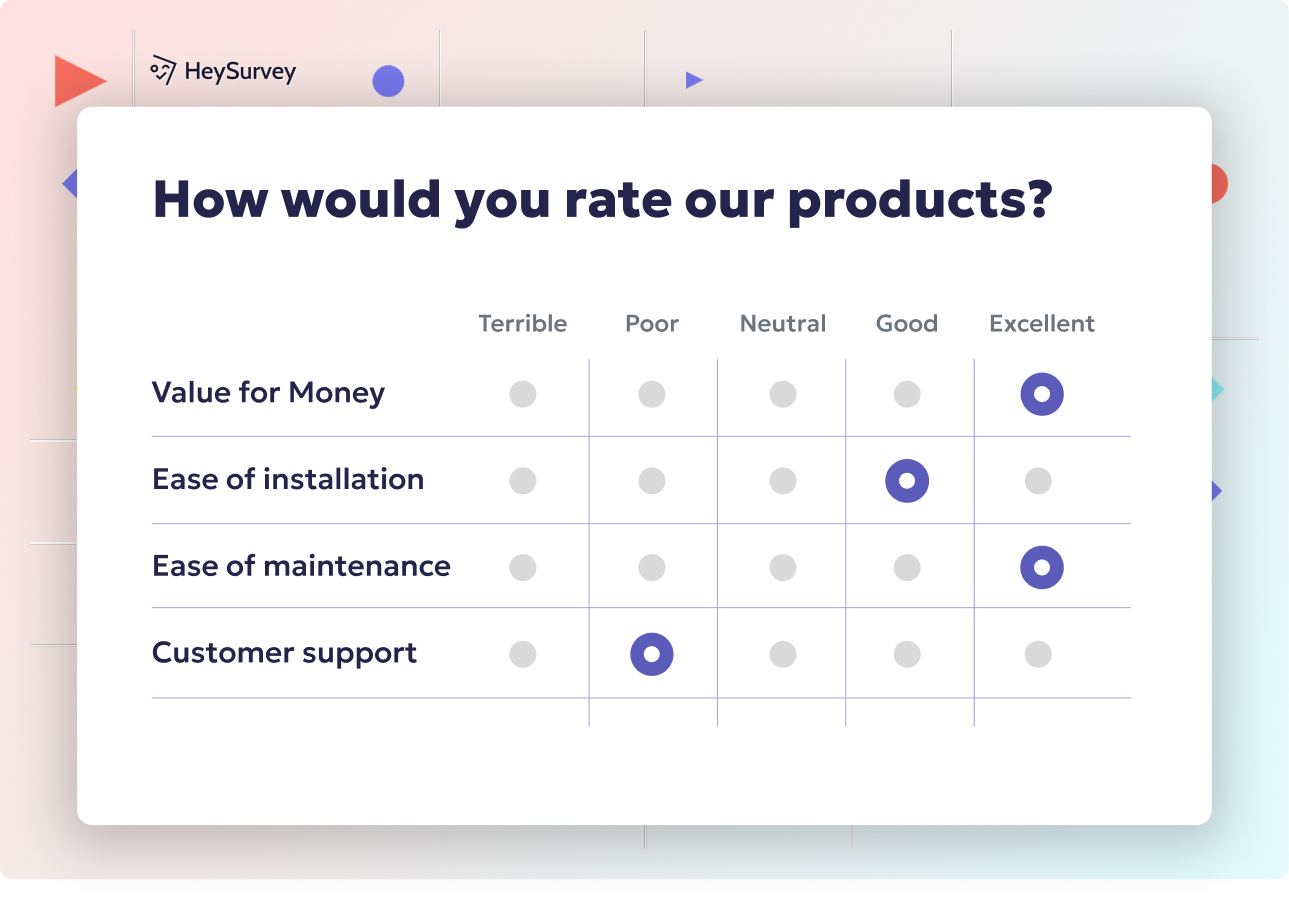
30+ Health Care Satisfaction Survey Questions: Templates & Tips
Explore 30 expert health care satisfaction survey questions across six types to boost patient fee...

31 Body Image Survey Questions: Types, Usage & Best Guide
Discover 35 expert body image survey questions across 7 proven types to measure body satisfaction...
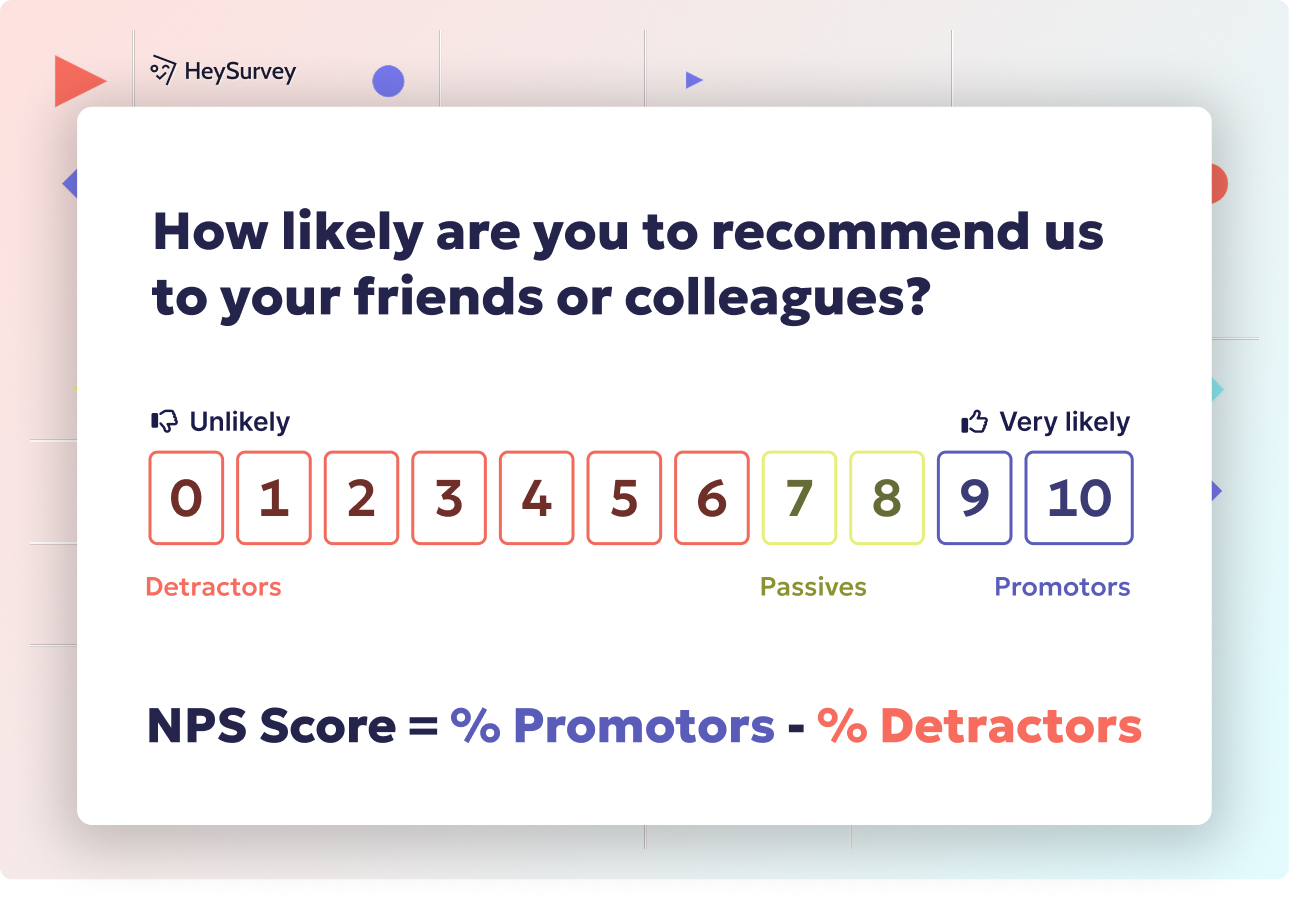
31 Essential Domestic Violence Survey Questions: Types & Uses
Explore 30+ domestic violence survey questions covering types, uses, samples, and best practices ...
